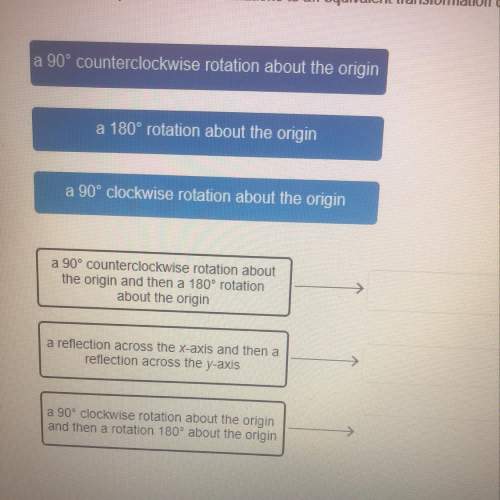
Mathematics, 20.11.2020 21:20 shelbyp2003
Lab Report: Genetic Crosses 1
You may wish to construct the Punnett squares on scratch paper first before you fill in the Punnett squares on the Lab Report. Answer the questions below. When you are finished, submit this assignment to your teacher by the due date for full credit.
Part 1: Monohybrid Cross—Predicting Freckles in an F1 Generation
Apply your understanding of how alleles assort and combine during reproduction to evaluate a scenario involving a monohybrid cross.
The allele for having freckles (F) is dominant over the allele for not having freckles (f). Some characteristics in people are inherited as simple dominant and recessive traits. One example is freckles. Freckles is a dominant trait, and the lack of freckles is a recessive trait. In this example, a person with freckles is represented as either FF or Ff, and a person with no freckles is represented as ff.
Total score: Click or tap here to enter text. of 20 points
(Score for Question 1: Click or tap here to enter text. of 2 points)
1. Imagine a mother and a father who both have freckles and are heterozygous for the trait, or Ff. They are the P generation, or parent generation. Create a Punnett square to show their offspring, the F1 generation.
Type your answer here. Click or tap here to enter text.
Part 1 Punnett Square
Click or tap here to enter text.
Click or tap here to enter text.
Click or tap here to enter text.
Click or tap here to enter text.
(Score for Question 2: Click or tap here to enter text. of 2 points)
2. Calculate the ratios of the genotypes and phenotypes of the offspring in the F1 generation.
Type your answer here. Click or tap here to enter text.
Genotypes:
Phenotypes:
Part 2: Dihybrid Cross—Predicting Flower Color and Seed Shape
Imagine that you are crossing two plants that are heterozygous for flower color and seed shape. The dominant and recessive alleles for these traits are as follows:
purple flowers: P
white flowers: p
round seeds: R
wrinkled seeds: r
(Score for Question 1: Click or tap here to enter text. of 2 points)
1. Determine the genotype of each parent plant and write them below.
Type your answer here. Click or tap here to enter text.
Genotype of parent plant 1:
Genotype of parent plant 2:
(Score for Question 2: Click or tap here to enter text. of 4 points)
2. How will the alleles for these traits assort into the gametes that each parent might produce? (Hint: For a reminder on how alleles sort independently into gametes, refer to the illustration in Part 2, Question 2, in the Student Guide.)
Type your answer here. Click or tap here to enter text.
Parent plant 1
Gamete 1:
Gamete 2:
Gamete 3:
Gamete 4:
Parent plant 2
Gamete 1:
Gamete 2:
Gamete 3:
Gamete 4:
(Score for Question 3: Click or tap here to enter text. of 4 points)
3. Create a Punnett square to calculate the possible genotypes that can result from a cross between the two parent plants. In a dihybrid cross, the alleles of the gametes of each parent are written along the left side and top of the Punnett square, just as they are for a monohybrid cross. Fill in the squares with the predicted genotypes. Some information has been filled in for you to help you complete a Punnett square for a dihybrid cross.
Type your answer here. Click or tap here to enter text.
Part 2 Punnett Square
PPRr
PPRr
ppRR
pprr
(Score for Question 4: Click or tap here to enter text. of 4 points)
4. Look at the Punnett square and list the genotypes that would correspond to each phenotype.
Type your answer here. Click or tap here to enter text.
purple flowers, round seeds:
purple flowers, wrinkled seeds:
white flowers, round seeds:
white flowers, wrinkled seeds:
(Score for Question 5: Click or tap here to enter text. of 2 points)
5. Finally, look at the Punnett square again and write the numbers of offspring with each phenotype.
Type your answer here. Click or tap here to enter text.
purple flowers, round seeds:
purple flowers, wrinkled seeds:
white flowers, round seeds:
white flowers, wrinkled seeds:

Answers: 2


Another question on Mathematics

Mathematics, 21.06.2019 15:30
The coordinates of a, b, and c in the diagram are a(p,4), b(6,1), and c(9,q). which equation correctly relates p and q? hint: since is perpendicular to , the slope of × the slope of = -1. a. p - q = 7 b. q - p = 7 c. -q - p = 7 d. p + q = 7
Answers: 3

Mathematics, 21.06.2019 17:00
There is a spinner with 14 equal areas, numbered 1 through 14. if the spinner is spun one time, what is the probability that the result is a multiple of 2 or a multiple of 5?
Answers: 2

Mathematics, 21.06.2019 19:00
What are the solutions of the equation? 5z^2 + 9z - 2 = 0 a. 1, -2 b. 1, 2 c. 1/5, -2 d. 1/5, 2
Answers: 2

Mathematics, 21.06.2019 19:30
Write a function rule for the table. hours worked pay 2 $16.00 4 $32.00 6 $48.00 8 $64.00 p = 16h p = 8.00h p = h + 16 h = 8.00p
Answers: 1
You know the right answer?
Lab Report: Genetic Crosses 1
You may wish to construct the Punnett squares on scratch paper first...
Questions


Business, 04.08.2019 17:50

Biology, 04.08.2019 17:50

Mathematics, 04.08.2019 17:50






Mathematics, 04.08.2019 17:50

Computers and Technology, 04.08.2019 17:50


History, 04.08.2019 17:50

Physics, 04.08.2019 17:50


Mathematics, 04.08.2019 17:50



Advanced Placement (AP), 04.08.2019 17:50





